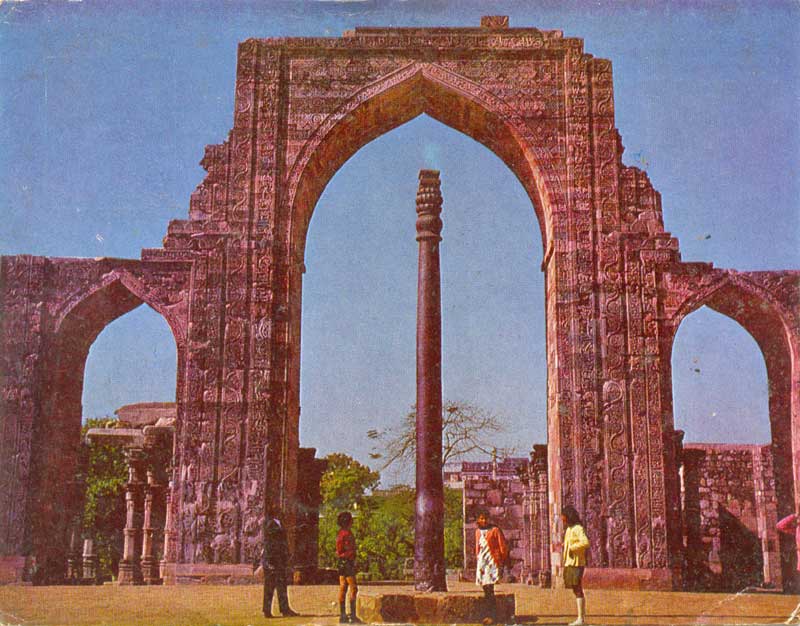
|
|
Qutb Complex, - Iron Pillar

In the courtyard of the Quwwatu'l-Islam mosque stands the famous iron pillar which bears a Sanskrit inscription in Gupta script, palaeographically assignable to the fourth century, a date which is also confirmed by the peculiar style of its amalaka-capital. The inscription records that the pillar was set up as a standard (dhvaja) of god Vishnu on the hill known as Vishnupada, in the memory of a mighty king named Chandra, who is now regarded as identical with Chandragupta II (375-413) of the imperial Gupta dynasty. A deep hole on the top of the pillar indicates that an additional member, perhaps an image of Garuda, was fitted into it to answer to its description as a standard of Vishnu.
The pillar has been brought here evidently from somewhere, else, as no other relics of the fourth century are found at the site. There is a strong bardic tradition that it was brought here - where from, nobody knows - by Anangpal, the Tomar king who is credited with the founding of Delhi. The base of the pillar is knobby, with small pieces of iron tying it to its foundations, and a lead sheet covers the portion concealed below the present floor-level.
The total length of this slightly tapering shaft is 7.20 m, of which 93 cm is buried below the ground. The metal of the pillar has been found to be almost pure malleable iron. Its portion below the ground shows some signs of rusting, but at a very slow rate. The manufacture of such a massive iron pillar, which has not deteriorated much during sixteen hundred years of its existence: is a standing testimony to the metallurgical skill of ancient Indians.

|
|